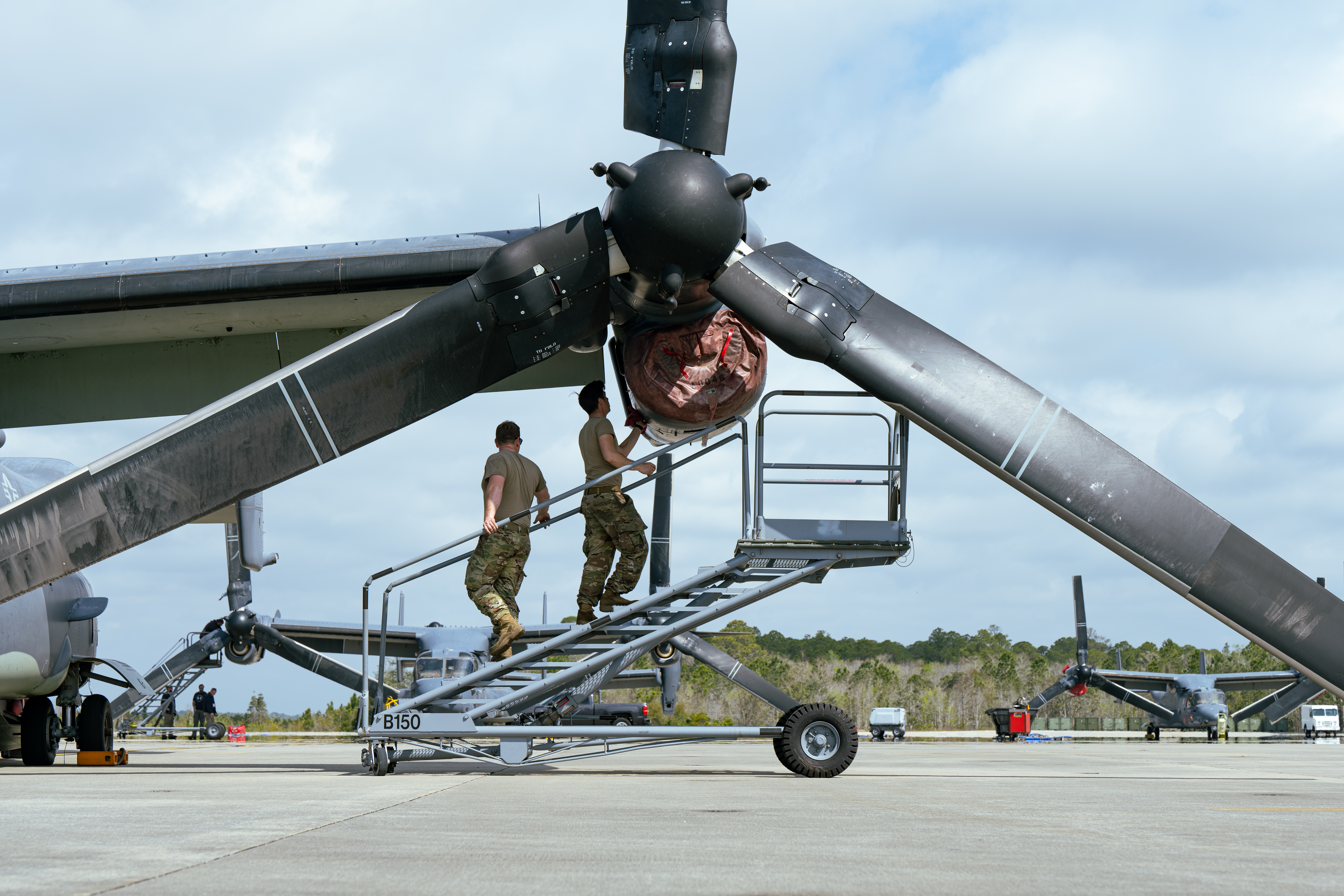Osprey Nacelle Improvement: A Game Changer for Agile Combat
May 13, 2024
The V-22 Osprey has been and will continue to be one of the most sought-after aircraft by theater commanders, second only to intelligence, surveillance, and reconnaissance assets. As the nation’s first operational military tiltrotor, the V-22 provides commanders with mission flexibility to win in today’s operating environment and in any future fight.
The Osprey’s ability to take off and land vertically like a helicopter and fly horizontally like an airplane is transformational, providing our armed forces with unique capabilities that change how missions are accomplished.
The aircraft’s nacelles, capable of rotating 90 degrees to deliver unmatched flight versatility, are located on the ends of the wings and house the power and propulsion for the two rotors.
As the V-22 fleet was approaching 450,000 flight-hours, it became apparent that the wing component was subject to significant forces, including vibration and heat. The Bell Boeing team, along with industry partners and fleet maintainers, implemented a data-driven design change to improve the reliability and maintainability of the critical nacelles, making the V-22 an even more powerful platform.

The Nacelle Improvement (NI) program aimed to simplify the nacelle structure, originally designed decades ago with a series of wires and junction boxes. The effort led to successful re-engineering more than 1,300 parts and using point-to-point wiring, , making manufacturing more affordable and less time-consuming.“Nearly 60% of all maintenance actions occur within the V-22’s nacelle area, so the NI effort is designed to attack the highest reliability and readiness degraders while maximizing return on investment for the taxpayer,” says Kurt Fuller, Bell senior vice president and V-22 program manager.
The NI program was initiated with CV-22s, the U.S. Air Force’s variant of the Osprey, and the modification has demonstrated consistently positive results.
Before NI modification, the average maintenance time dedicated to nacelles was more than 2.5 hours per fight hour. Twenty CV-22s have undergone the NI modification and with over 4,000 hours flown, those aircraft have required only 12 maintenance hours and have not required any maintenance actions on the modified nacelles.
This has saved the Air Force over 10,000 in total nacelle maintenance hours. Maintainability and reliability were key performance parameters in the new design to measure success, and the results have exceeded expectations.
Delivering both short-term and long-term benefits to support the longevity of the fleet, the NI program provides immediate readiness advances that will continue to pay long-term dividends in availability and affordability.
The results seen by the Air Force will translate to the Navy CMV-22 and the Marine Corps MV-22. In the Indo-Pacific theater specifically, the increasing need for sea services to prepare for and execute Expeditionary Advanced Base Operations and Distributed Maritime Operations is exposing a vulnerable logistical capability gap.
If deterrence fails and conflict occurs, naval commanders will have to resupply their forces over vast distances. This poses significant operational challenges where force structure does not match its combat logistics requirements.
In times of rapid response and crisis, commanders cannot spend as much time planning how to support the force as to employ it. The solution is to focus on fortifying the Osprey fleet now. Taking actions today to modernize and sustain the V-22 variants across the services will ensure that operational capabilities align with strategic imperatives.
The requirement to move forces and cargo between dispersed bases, forward logistic support sites, and ships at sea will prioritize the need for a dedicated logistics connector. That connector must be able to achieve the speed, range, and versatility that only tiltrotor technology can provide. The V-22 is that valuable connector.
The strategic imperatives facing the Navy and Marine Corps, combined with the demonstrated, significant returns on investment in aircraft availability and affordability, make support for the Nacelle Improvement program an imperative.
Christopher “chet” Misner, is Senior Manager, Bell Strategic Pursuits
Featured Image: PACIFIC OCEAN (Sept. 12, 2023) A CMV-22B Osprey from the “Sunhawks“ of Fleet Logistics Multi-Mission Squadron (VRM) 50 and a CMV-22B Osprey from the “Titans” of Fleet Logistics Multi-Mission Squadron (VRM) 30 conduct flight operations on the flight deck of the aircraft carrier USS Nimitz (CVN 68). Nimitz is underway conducting routine operations. (U.S. Navy photo by Mass Communication Specialist 3rd Class Emma Burgess).
The appearance of U.S. Department of Defense (DoD) visual information does not imply or constitute DoD endorsement.

